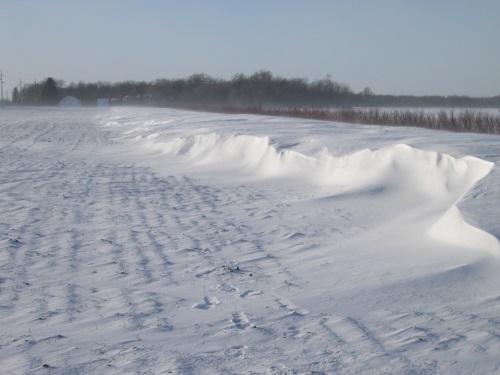The Minnesota Department of Transportation is in the process of installing “living snow fences” near two bridges on U.S. Highway 12 in partnership with the Kandiyohi Soil and Water Conservation District.
[Above photo by the Minnesota DOT]
Made up of trees, shrubs, native grasses and/or wildflowers to trap snow before it reaches a bridge or roadway, “living snow fences” provide an array of benefits over time compared to fences made from wood, steel, and other inert materials. Though they require two to three years of growth to become effective Minnesota DOT noted on its description page that living snow fences help control soil erosion, reduce spring flooding resulting from snow melt, and serve as grassland nesting birds and pollinator habitats. They also reduce the need for road salt deployment and plow truck operation – reducing winter operation expenses – while helping increase crop yields by 10 percent or more.
“A living snow fence is more than landscaping and highway beautification, it serves a purpose,” explained Dan Gullickson, Minnesota DOT’s blowing snow control shared services program supervisor, in a statement. “We engineer blowing snow control using nature; we use plants to mitigate the wind.”

He noted that this particular living snow fence installation project aims to counter the winter road hazard of blowing ice, which forms on roadways and bridge decks when snow blows onto the surface then melts and refreezes, creating icy patches.
The project calls for planting 1,644 shrubs – black chokeberry, amur maple, golden current, arrowwood, gray dogwood, common lilac, and red osier dogwood – over 7,089 linear feet within the agency’s existing right of way along U.S. 12. Those shrubs should attain sufficient height within two to three years of platting to start offering protection against blowing snow. Steve Dols – Minnesota DOT’s West Central Region blowing snow control shared services designer – developed the design for the two living snow fences along U.S. 12. The agency added that Dols is currently working on 12 additional snow fence projects across west-central and southwest Minnesota; efforts support by highway safety funds.

